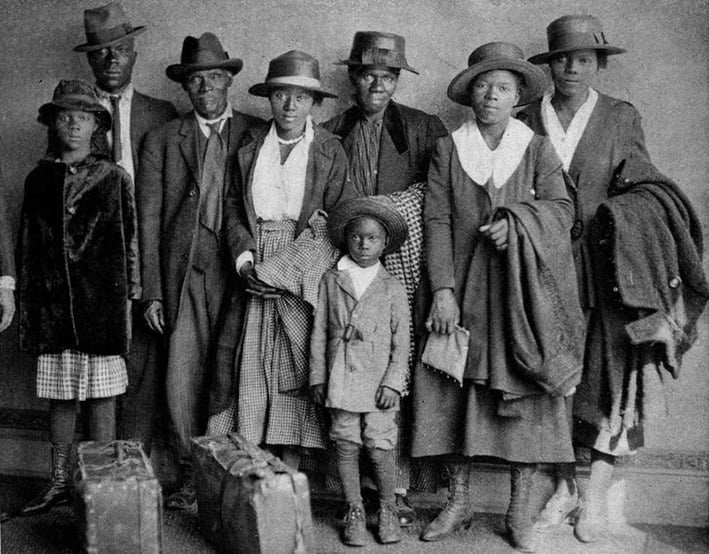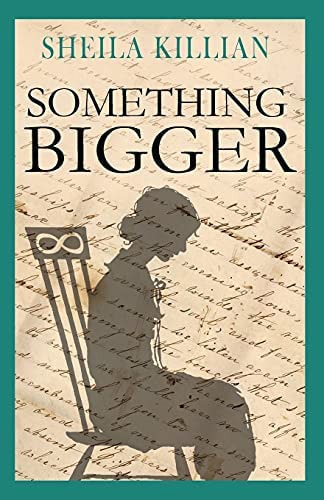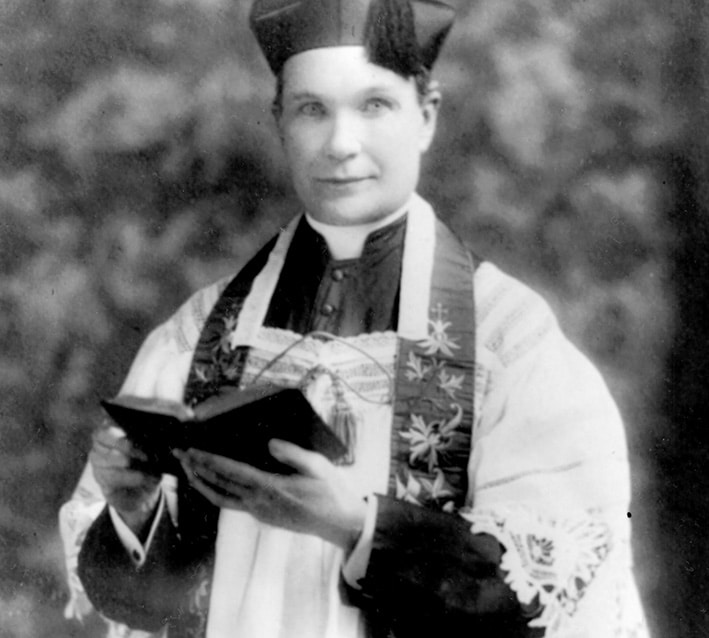
Family ties help novelist portray an infamous case in American legal history
A standard text on various school curricula is To Kill a Mockingbird. Set in Alabama in the early 1930s, it describes a world bounded by Segregation laws, where racist attitudes against African Americans are rife, and modern students reading the work are typically stunned and horrified when Tom Robinson, an African American man falsely accused of raping a white woman, is found guilty of the crime by the white jury, when the evidence clearly demonstrates he could not commit the crime.
In the Deep South in the 20s and 30s, in addition to African Americans, other minority groups, including Catholics, were the victims of prejudice. Writer Sheila Killian, who teaches at Limerick University, in her debut novel Something Bigger, recounts one of the most infamous cases in American legal history, namely the murder of Irish Catholic priest Fr James Coyle on 11 August 1921 by Edwin Stephenson (whom Killian re-names Abner Stubbs).
Whilst this event has been the subject of various studies, including Sharon Davies’ excellent monograph, Rising Road (2010), this is the first modern novel to recount the story.
The novel is written from the perspective of Marcella Coyle, the victim’s sister who was then serving as his housekeeper. Like her brother, she was an immigrant from Ireland. Killian is herself the great-niece of Marcella Coyle, and as a girl her then elderly great-aunt recounted to her events from her past, including the murder of her brother priest, material that formed the basis of the novel, whose publication in July 2021 coincided with the centenary of his killing.
The novel begins in 1962 with Marcella as an elderly woman living in New York who regularly visits St Patrick’s Cathedral. Although it has been a number of decades since the key event in her life, namely her brother’s death, for her there are constant reminders of him. The plot then moves back to 1904. Marcella is a teenage girl in Rockfield, a small village in Ireland, anticipating the visit of her older brother, Fr James Coyle, a priest of the diocese of Mobile, Alabama.
As with many other rural Irish families, many of her siblings have already emigrated due to a lack of job prospects. Killian suggests that at least one of Marcella’s brothers emigrated to Australia. Facing similar bleak prospects despite her being a bright student, Fr James suggests she emigrates to the USA and completes her schooling there.
Marcella’s mother reluctantly agrees to her 14 year old daughter emigrating. Making the journey alone, she eventually arrives in Birmingham, Alabama, residing in St Paul’s presbytery. Completing her Secondary education, she obtains a job in a store, eventually becoming a bookkeeper there.

However, her academic and job success, as well as her gradual integration into American life, are against the backdrop of rising prejudice. The Klu Klux Klan, a ‘white supremicist’ (sic) organisation successfully recruits a large number of white men into its ranks, including the virulently anti-Catholic barber Abner Stubbs. Both Marcella and her brother are on the receiving end of this prejudice, with Stubbs refusing to cut Fr James’ hair, and Marcella losing her job at the store.
In the face of the anti-Catholic prejudice, Fr Coyle himself does not remain silent, but regularly writes articles challenging the anti-Catholic bigotry that is rife, much of which is based upon a fundamental misunderstanding of Catholic teachings. His forthright stance does not endear him to fellow Catholics, many of whom preferred him to remain silent and keep a low profile in response to the aggressive bigotry.
At an early stage, Stubb’s daughter, Bessie (whose real name was Ruth), is introduced into the narrative, as an inquisitive child who enters the rectory garden. References to her are made in the novel, with her ultimately forming an attachment to a Catholic immigrant originally from Puerto Rico who is considerably older than her.
The couple makes the decision to elope, and are married by Fr James Coyle on the afternoon of 11 August. The climax of the novel is Fr Coyle’s death. Enraged about his daughter’s actions, Stubbs approaches Coyle, sitting on the porch of the rectory, a place he often occupies whilst he reads his breviary, and shoots him dead.
Readers are not only introduced to this infamous murder trial, but also what life was like for young people in Ireland early in the 20th century…this work is highly recommended.
Killian does not dwell on the trial in great detail. Given the circumstances, the defendant should not only have been charged with murder of the first degree (pre-meditated wilful murder), but should also have been found guilty, as the case against him was overwhelming. Instead, he was charged only with the lesser charge of murder of the second degree. In addition, not only was the judge a Klansmen, but four of the five lawyers, including the Defence lawyer Rufus Black, were also Klan members, or subsequently joined it. So keen was the Klan to secure an acquittal, that they paid the defence costs. In addition, there has been some speculation that at least some of the jury members were Klansmen.
Given the sympathy to the Klan and the widespread disdain towards and hatred of the Catholic Church then prevailing in the milieu, the jury accepted the defence offered by Black, namely temporary insanity, and found him not guilty. Although the verdict was hailed as a triumph by many in the South at the time, it drew astonishment from many.
Some of the details of the novel diverge from the account offered by Davies. For example, Killian alleges that it was Coyle’s intention to perform the marriage; however, Davies asserts that this was last minute, as the couple approached him only after they had presented themselves to another presbytery, only to discover the priest was unable to perform the ceremony as he was absent. Similarly, Killian chose to change the names of the killer and his family members.
There are also minor errors of fact in the novel, for example, Killian makes an anachronistic reference to radio broadcasts in 1915 – regular radio broadcasting in the USA did not commence until the early 1920s, and radios were not to become standard household items amongst the middle and upper income groups in the USA until the 1920s.
However, this needs to be set against the detailed descriptions of both Ireland and the USA, which are extremely detailed and present as being authentic. In the case of the latter, particularly those of Birmingham, Alabama, they are the fruit of extensive research the author conducted, including walking the streets which would have been familiar to her great aunt and uncle.

Something Bigger is an interesting and engaging read. The characterisation of Marcella is authentic, if at times somewhat stilted. The most moving points of the narrative, on which the author probably drew from her observations of the protagonist, are the few chapters in the novel that focus on Marcella’s life after the trial, which describe the grief for the loss of her brother she carried for the rest of her life, a grief that reminded this reviewer of that which his late grandmother carried for her brother who was killed in action in World War Two.
Readers are not only introduced to this infamous murder trial, but also what life was like for young people in Ireland early in the 20th century. Similarly, Killian’s recreation of the social milieu of Birmingham, Alabama in the first two decades of the twentieth century is fascinating. Killian successfully gained and maintained this reviewer’s interest.
Hence, this work is highly recommended, one which this reviewer found hard to put down.
Whilst printed copies of this book may not be so readily obtainable from regular bookstores, ebook versions for Kindle and Kobo (this reviewer using a copy of the latter to review this work) are readily available. Alternatively, a printed copy can be purchased readily from online sellers such as The Nile, and Book Depository.
Something Bigger, Sheila Killian, Caritas Press, 2021, PB, ISBN: 9781940209432. Ebook versions available on Kindle and Kobo.
